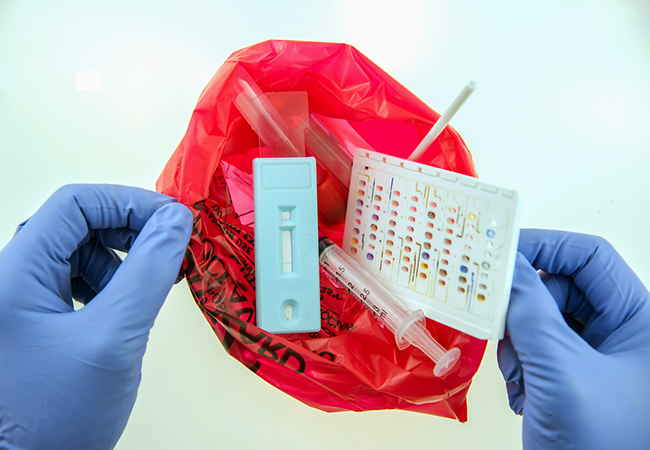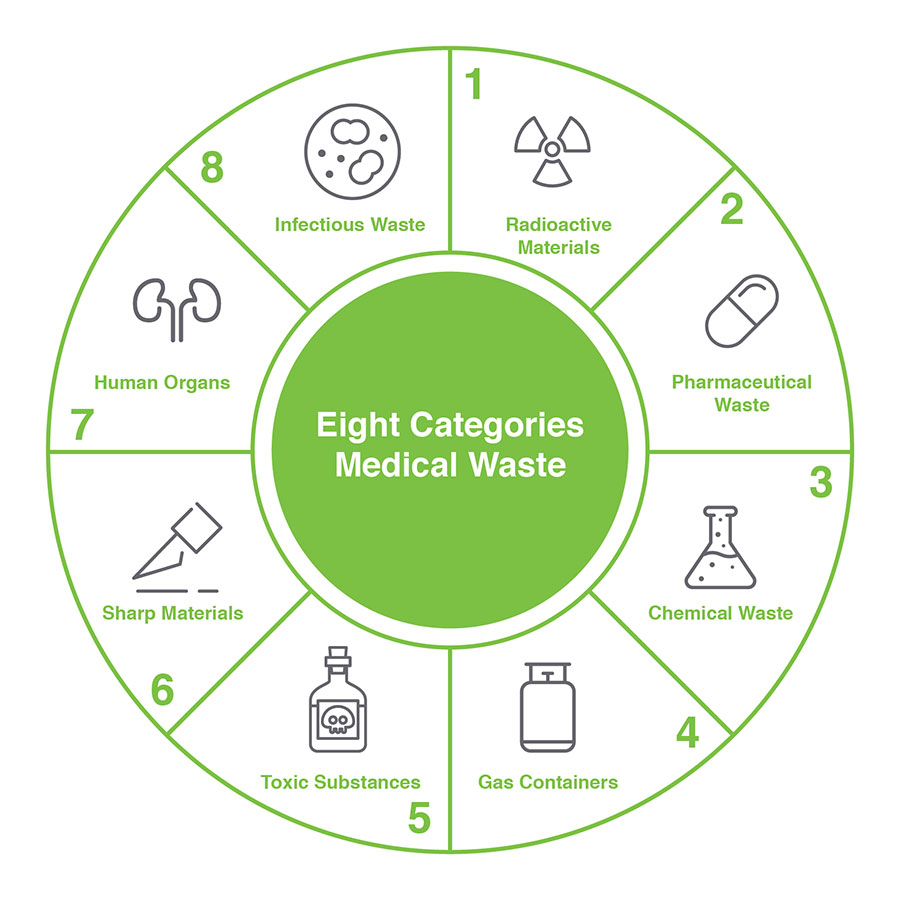Stay Ahead of Rules: Expert Suggestions on Medical Garbage Disposal
In a world where the healthcare market is continuously progressing, it is essential for medical centers to stay in advance of laws when it concerns the proper disposal of clinical waste. With strict guidelines and constant regulative changes, it can be challenging to navigate the intricacies of this process. Nonetheless, with professional guidance, facilities can ensure compliance and reduce threats connected with inappropriate garbage disposal. From recognizing the different categories of clinical waste to implementing the best collection and segregation methods, this conversation will offer important understandings and actionable pointers to assist facilities stay in advance of laws in the ever-changing landscape of clinical garbage disposal.
Recognizing Clinical Waste Categories
Recognizing clinical waste groups is crucial for correct disposal and management in medical care centers. Clinical waste describes any waste created by healthcare activities that might present a risk to public wellness or the environment. It is critical to categorize medical waste properly to guarantee its safe handling, therapy, disposal, and transportation.
There are a number of categories of clinical waste that medical care facilities need to be acquainted with. One of the most usual groups include transmittable waste, pathological waste, sharps waste, pharmaceutical waste, and chemical waste. Each group has specific guidelines and policies for its correct administration and disposal.
Pathological waste refers to human cells, body organs, or body components that require special handling and disposal. Drug waste comprises ended, extra, or polluted drugs that require careful handling and disposal.
Staying Up-To-Date With Regulatory Modifications
Staying current with regulative adjustments is critical for healthcare centers to guarantee conformity and proper monitoring of medical waste disposal. medical waste removal services. With laws frequently advancing, it is vital for healthcare centers to stay current to prevent penalties, penalties, and possible harm to the atmosphere and public health
To stay in advance of governing adjustments, health care facilities should develop a system for tracking and tracking updates. This can be done by signing up for regulative newsletters, participating in workshops and seminars, and actively taking part in industry organizations. Additionally, centers should designate a personnel or group in charge of staying educated and disseminating details to pertinent stakeholders.
Regular interaction with regulative agencies is also important. Healthcare centers ought to develop relationships with neighborhood, state, and federal agencies to ensure they are mindful of any changes in guidelines that might influence their waste monitoring practices. This can be done via normal conferences, engagement in public remark durations, and aggressive interaction with governing companies.
In addition, medical care centers need to take into consideration partnering with waste management business that focus on medical waste disposal (medical waste disposal services with WasteX). These firms are commonly skilled in the most recent guidelines and can give advice and assistance to guarantee compliance
Carrying Out Appropriate Collection and Partition Methods
To successfully handle medical waste disposal, medical care facilities need to develop proper collection and segregation methods according to regulatory standards. Executing these techniques guarantees the safe handling and disposal of potentially harmful products, secures the environment, and decreases the threat of infections and injuries to health care employees and the public.
Correct collection and segregation approaches include making use of marked containers and labeling systems. Healthcare centers should offer clearly identified containers for various types of medical waste, such as sharps, transmittable waste, pharmaceutical waste, and non-hazardous waste. These containers should be color-coded and plainly marked to prevent complication and advertise simple identification.
In addition, medical care facilities need to train their team on the right procedures for accumulating and segregating medical waste. This includes enlightening them on the different kinds of waste, the ideal containers to use, and the relevance of complying with guidelines and policies. Regular training sessions and correspondence course need to be conducted to make sure that staff participants remain up-to-date on ideal techniques.
Furthermore, medical care facilities should develop a system for normal collection and disposal of medical waste. This may involve partnering with certified waste monitoring business web link that specialize in medical garbage disposal. These companies will make certain that the accumulated waste is moved and dealt with in conformity with regulative requirements.
Selecting the Right Disposal Approaches
Incineration is among the most reliable and common methods for taking care of particular types of clinical waste, such as pathological waste and sharps. It includes the regulated burning of waste at high temperatures, minimizing it to ash. Incineration can release harmful pollutants into the air and contribute to air contamination.

Various other disposal approaches consist of chemical therapy, microwave treatment, and landfilling. Chemical therapy entails using chemicals to sanitize and reduce the effects of the waste. Microwave therapy utilizes microwave power to heat and sanitize the waste. Landfilling involves burying the waste in a designated landfill area (medical waste disposal services with WasteX). Nonetheless, landfilling should be the last option as a result of the possible threat of contamination to soil and groundwater.
Ensuring Compliance Via Paperwork and Training
After carefully taking into consideration the appropriate disposal methods for medical waste, healthcare centers must guarantee compliance with guidelines and lessen ecological influence by carrying out reliable documentation and training procedures. This step is critical in keeping a risk-free and lasting setting for both health care workers and the general public.

Health care workers who manage medical waste should get suitable training on waste partition, handling, and disposal procedures. By giving detailed training, health care facilities can encourage their personnel to make informed decisions and minimize the risk of inappropriate waste disposal.
Final Thought
Finally, remaining ahead of guidelines in medical garbage disposal is critical for healthcare centers. medical waste removal service. Recognizing Recommended Reading the various classifications of medical waste, remaining upgraded with regulatory modifications, implementing correct collection and partition techniques, selecting the ideal disposal methods, and guaranteeing conformity with paperwork and training are all necessary steps. By complying with these guidelines, medical care organizations can properly manage and dispose of medical waste in a responsible and secure way
From recognizing the various classifications of medical waste to implementing the best collection and segregation methods, this discussion will certainly give actionable tips and beneficial insights to assist centers remain in advance of policies in the ever-changing landscape of clinical waste disposal. - medical waste disposal services with WasteX
The most common groups include infectious waste, pathological waste, sharps waste, pharmaceutical waste, and chemical waste. Medical care centers need to offer clearly identified containers for different types of medical waste, such as sharps, infectious waste, pharmaceutical waste, and non-hazardous waste. Medical care facilities ought to develop a detailed system to record and track all elements of clinical waste disposal, including types of waste generated, quantities, and disposal approaches used. Healthcare employees that deal with clinical waste must get appropriate training on waste partition, dealing with, and disposal treatments.